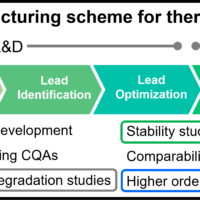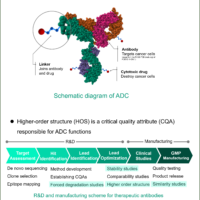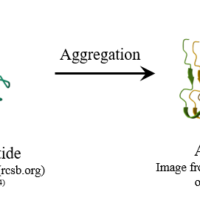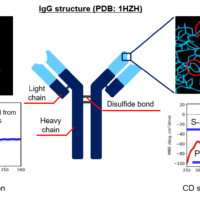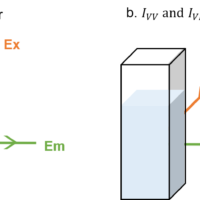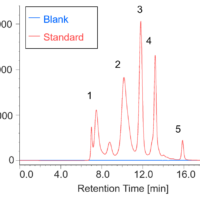Introduction
< Key Points >
Although the degree of color toning for pearls is difficult to evaluate using a spectrometer, it is possible using a spectrofluorometer.
When white pearls are harvested from their shells, the dark organic matter in the nacreous layer is removed by bleaching, and the pearls are then processed to bring out their beauty through color toning*. However, excessive toning results in a reddish color that is different from the original color of the pearl (Fig. 1). Evaluation of the degree of color toning has conventionally been done visually, but there is an increasing need for a more objective evaluation method.
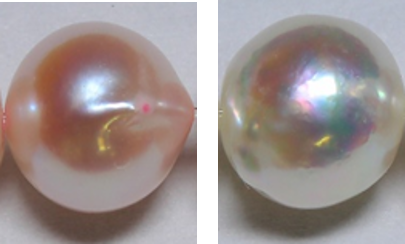
Fig. 1 White pearl
(left: over-toned, right: bleached only)
*Color toning: refers to the process of dyeing white pearls to produce a very light pink color. This is different to the pink color that results from optical interference in pearls.
Generally, the color of an object is evaluated using a spectrometer and an integrating sphere. There are two types of measurements using an integrating sphere: one that includes specular reflection and one that does not, as shown in Fig. 2.
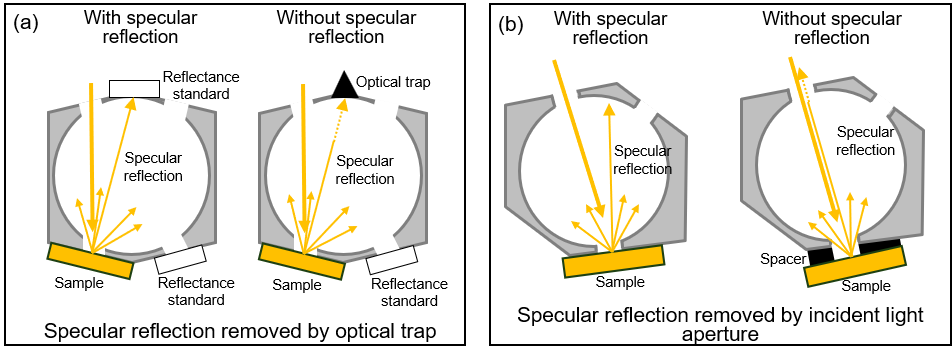
Fig. 2 Mechanisms for rejection of specular reflection using integrating sphere with spectrometer
Since specular reflection is strongly affected by room illumination (Fig. 3), in order to evaluate the color of an object as seen by a human, measurements should be performed in the absence of specular reflection. To eliminate specular reflection, an optical trap that absorbs this component can be attached to the integrating sphere as shown in Fig. 2(a), or it can be removed through the incident-light aperture as shown in Fig. 2(b).
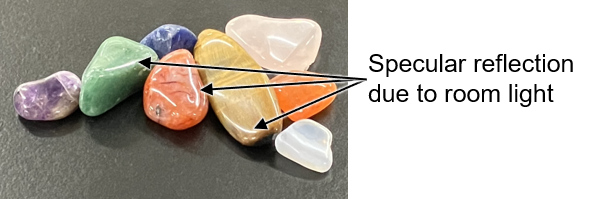
Fig. 3 Example of specular reflection from pebbles
Although these methods are effective for planar objects, for spherical objects such as pearls, specular reflection occurs in different directions, and it cannot be simply eliminated. As an alternative approach, this report presents an example of evaluating the color of pearls using the unique optics of a spectrofluorometer to obtain spectra using only diffusely reflected light. The method is based on the fact that spectrofluorometers are designed so that the incident and detection optical paths are orthogonal to each other to prevent detection of incident light.
Experimental
The size of the irradiated area was reduced by an aperture, and a pearl holder containing a light-shieling plate to prevent specular reflection from reaching the emission detector was placed in the sample compartment, allowing only diffuse reflection from the pearl sample to be detected (Fig. 4).
<Samples>
Pearl: Two bleached pearls and two over-toned pearls.
<System>
Instrument: FP-8550 Spectrofluorometer
Accessory: Jig shown in Fig. 4 (aperture and pearl holder)
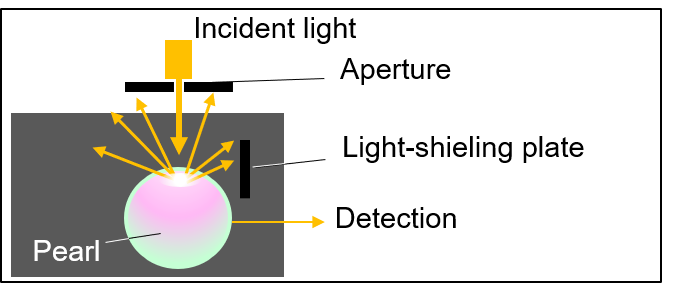
Fig. 4 Measurement configuration
<Parameters>
Measurement mode: Synchronous
Ex bandwidth: 5 nm
Em bandwidth: 10 nm
Difference wavelength: 0 nm
Measurement range: 780-380 nm
Response: 0.2 sec
Scan speed: 500 nm/min
Keywords
Pearl, color toning evaluation, spectrofluorometer, reflection
Results
Figure 5 shows normalized reflectance spectra obtained from the different pearl samples. Since only a part of the diffuse reflection is detected in these measurements, absolute reflectance values cannot be obtained, but it is possible to compare relative differences in spectral shape between samples.
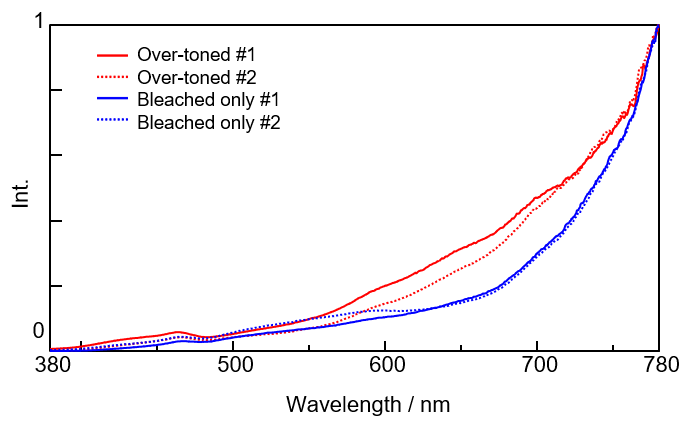
Fig. 5 Measured spectra (normalized)
It can be seen that there is a difference in spectral profile between the over-toned and bleached-only pearls. The former show relatively higher photometric intensity at wavelengths longer than 600 nm, which gives rise to an orange-red color. This is consistent with the images in Fig. 1, where the over-toned pearl appears more pinkish than the bleached-only pearl. This is the first report on the use of a spectrofluorometer to perform such an objective assessment of the color of pearls.
Conclusion
By modifying the optical system of a spectrofluorometer, an objective assessment of degree of color toning of pearls could be performed, which is not possible using the usual combination of a spectrometer and an integrating sphere. We believe that this technique can be applied to a wide range of spherical objects, which have conventionally been difficult to evaluate due to the influence of specular reflection.
Acknowledgements
We thank the Pearl Science Laboratory for providing the samples.

